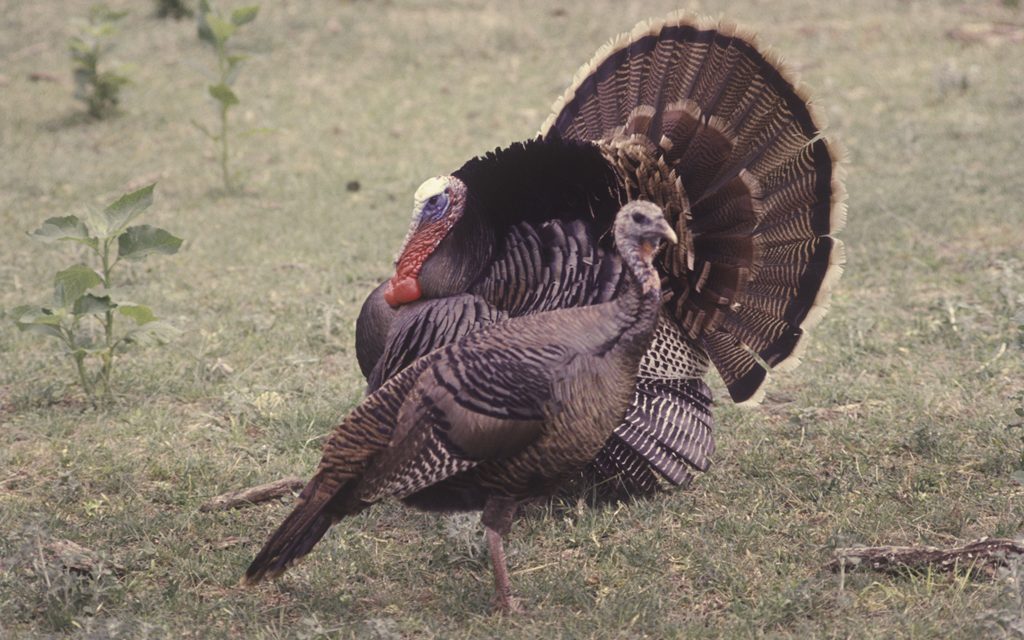TPWD turkey program leader Jason Hardin reports Texas has 500,000 turkeys. Many are mature gobblers. Spring turkey season opened in the South Zone on Mar. 16; Mar. 30 in the North Zone. One turkey-counties opened Apr. 1. Eastern turkey season begins Apr. 22. You’ve probably missed the opener in the two largest turkey hunting areas. But is that bad? Not at all. Gary Sefton is a country music song writer when he isn’t turkey hunting . One of my favorite songs of his is “All Henned-up and Happy.” It tells of a frustrated hunter who tries to call a long-beard gobbler away from a turkey hen he has “befriended”. It doesn’t work. Calling’s effective later. Spring turkey hunting is a boy-girl thing. It’s the breeding season. The hens – the girls of the species — are in a mood to engage in, uh, breeding. And it usually doesn’t take the hens long to meet a willing would-be sire to accommodate them. And when that happens, the contented couple goes steady for an hour or so, and then the gobbler checks out to find another girl friend. He’s done what Nature requires, and strolls off to “gobble” up another hen. That’s what makes spring turkey hunting what it is today. His call to the ladies is his “gobble”. The hens respond — if they’re interested — by emitting yelps and clucks. I imagine the Indians (Native Americans), were the first to observe this, and tried to duplicate the sound. That launched what is today known as the turkey call industry. There are more turkey calls on the market today than brands of adult beverages. The most common types are box calls, mouth calls and slates. When I became interested in turkey hunting, I was intimidated – especially by mouth calls. An experienced turkey hunter-friend, Horace Gore, a TPWD wildlife biologist, straightened me out. “John,” he said, “anybody can call a gobbler up with a little practice on a box call. Calling may be the least important part of turkey hunting. The most important things are being well camouflaged, seated comfortably out of sight, and sitting STILL.” I recently saw how important that last item is. I took my grandson, Carter Brown, on his first turkey hunt with his new shotgun. It was well past opening day. He was well-camoed, his grandfather called convincingly with a slate and a striker but hadn’t seated him so he could raise the .20 gauge and shoot without noticeable movement. Three gobblers answered my calls. As Carter moved slightly to raise the gun, the gobblers stopped short, then bolted back to the brush. That late in the season after opening day, many hens were already bred and unavailable, making gobblers more likely to come to calls. Hardin agrees. Ten minutes later, I called them back. Same scene. But this time, they stayed gone. Had Carter been better seated and not moved until they came into range, we’d have had his turkey for Thanksgiving. My bad. And I knew better. JJ
Woods, Waters, and Wildlife: Gobble?





